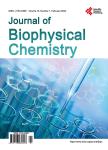Low-Flow Polysulfone Hemodialysis Alters Lipoprotein Parameters, Paraoxonase Activity and <i>in Vitro</i>Incorporation of Phospholipids
Low-Flow Polysulfone Hemodialysis Alters Lipoprotein Parameters, Paraoxonase Activity and <i>in Vitro</i>Incorporation of Phospholipids作者机构:PGBSMI/Goncalo Moniz Research Center (CPqGM) FIOCRUZ Foundation Center Salvador Brazil Department of Biofunction Health Institute of Science Federal University of Bahia/UFBA Salvador Brazil Clinical Biochemistry Laboratory Department of Clinical and Toxicological Analysis Faculty of Pharmacy Federal University of Bahia/UFBA Salvador Brazil Ana Neri Hospital SESAB and Federal University of Bahia/UFBA Salvador Brazil Naval Hospital of Salvador Brazilian Marine Forces Salvador Brazil Laboratory of Molecular Biology and Genetics at Center of Agricultural Environmental and Biological Sciences (CCAAB-UFRB) Cruz das Almas Brazil
出 版 物:《Journal of Biophysical Chemistry》 (生物物理化学(英文))
年 卷 期:2017年第8卷第3期
页 面:23-38页
学科分类:1002[医学-临床医学] 100201[医学-内科学(含:心血管病、血液病、呼吸系病、消化系病、内分泌与代谢病、肾病、风湿病、传染病)] 10[医学]
主 题:Hemodialysis Dyslipidemia Cardiovascular Risk Bioindices PLTP PON-1 HDL-Remodeling Low-Flow Polysulfone Dialyzing-Membrane
摘 要:End stage-renal-disease (ESRD) is associated with dyslipidemia and premature atherosclerosis. The study evaluates the effect of hemodialysis (HD) on HDL-remodeling between pre- and post-HD. Was conducted a cross-sectional study with 50 ESRD male patients, undergoing HD at Ana Neri Hospital, Salvador, Brazil. All individuals were on HD for at least 3 months, into a three sessions protocol for 3 - 4 hours per week, with a polysulfone low-flow basic-dialyzing-membrane and unfractionated-heparin. HDL Phospholipid-incorporation was measured by 14C-PL-scintillation-counting, expressed as %14C-PL/mL/hour. Paraoxonase (PON-1) activity was measured by spectrophotometry using paraoxon as substrate. Cardiovascular risk ratios and atherogenic index of plasma were calculated. Total cholesterol, HDL-C and non-HDL-C increased at post-HD on all age groups, but without triglycerides (TG) changes. TG/HDL-C decreased in 30 - 39 and 40 - 49 year (y) at post-HD (p 0.05). LDL-C/apoB increased in 60 y, after HD (p 60 (p 0.01). On the other hand, non-HDL-C/HDL-C reduced in 40 - 49 and 60 y, at post-HD (p 0.05). The linear-correlation between %14C-PL-incorporation and non-HDL-C/HDL-C was negative in 30 - 39 y, both at pre-HD (r = -0.90;p = 0.002) and post-HD (r = -0.78;p = 0.022). Linear-correlation between PON-1 and %14C-PL-incorporation was positive in 60 y, both at pre- (r = 0.63;p = 0.029) and post-HD (r = 0.65;p = 0.022). PON-1 activity increased at pre- (59 ± 30) and post-HD (73 ± 38) in 50 - 59 y (p 0.05). The %14C-PL-incorporation was reduced in 60 y (p 0.05), when compared to pre- and post-HD. ESRD patients undergoing HD shows important changes on lipid-profile, PON-1-activity, cardiac risk ratios and HDL-remodeling. These results demonstrate the influence of HD with a polysulfone low-flow basic-dialyzing-membrane and unfractionated-heparin on lipoprotein metabolism.



